




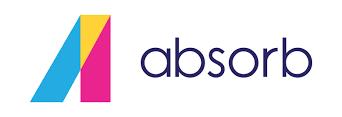
JULY 2023 • Vol.10 • No.07 (ISSN 2564-2014) THE FUTURE OF SKILL DEVELOPMENT: LEARNING THROUGH TECHNOLOGIES
The Future of Learning Technologies 2023 Page 17 - 43 Sponsored by Optimize learning technologies to improve organizational learning culture
- Chirag Doshi, Head Of People, and Channappa Jagadish, Regional Head of L&D, Thoughtworks

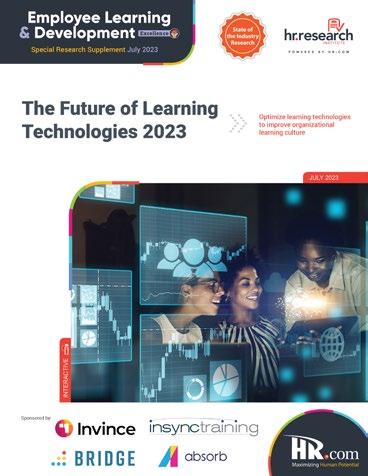

Employee Learning & Development Excellence JULY 2023 Vol.10 No.07
Skill Development: Learning Through Technologies
the future of employee learning and development
Doshi, Head Of People,
Jagadish, Regional
of
Thoughtworks 07 On the Cover INDEX (ISSN 2564-2014) Articles 48 Overcoming The Talent Shortage With Learning And Development
employee learning and development
The Future Of
Embracing
- Chirag
and Channappa
Head
L&D,
Prioritizing
O’Reilly Media 09 Overwhelming And Outdated Onboarding: Strategies For HR Departments To Improve Training For Today’s Workforce 5 ways to improve employee training
Christopher Pappas, Founder, eLearning Industry 15 Hybrid Learning: 7 Ways To Ensure No Learners Are Left Behind Mastering hybrid learning
Karen Vieth, VP of Virtual Learning Solutions, InSync Training The Future of Learning Technologies 2023 Optimize learning technologies to improve organizational learning culture Page 17 - 43
– Laura Baldwin, President,
–
–
Top Picks 12
Shaping The Future Of Learning: The Role Of Technology In Organizations
Learn how technology impacts employee development
-
Anjan Pathak, CTO and Co-Founder, Vantage Circle
45
The Benefits Of Emphasizing Social Learning In A Remote World
3 steps to boost employee engagement with social learning in a remote-first work environment

 - Geri Morgan, Chief People Officer, Intellum
- Geri Morgan, Chief People Officer, Intellum
51
Learning And Employee Engagement, The Perfect Relationship?
Tailored learning experiences foster autonomy, meet individual needs and drive career growth
-
Jen Collins, Senior Director, Learn In
56
Effective Learning And Development Programs For 2023
Navigating challenges, priorities and opportunities
- Russell
Kendrick,
Managing Director, ILX Group
INDEX
Editorial Purpose
Our mission is to promote personal and professional development based on constructive values, sound ethics, and timeless principles.
Excellence Publications
Debbie McGrath CEO, HR.com - Publisher
Sue Kelley Director (Product, Marketing, and Research)
Babitha Balakrishnan and Deepa Damodaran Excellence Publications Managers and Editors
Deepak S Senior - Design and Layout
Employee Learning & Development Excellence Team
Deepa Damodaran Editor

Nataraj Ramesh Design and Layout (Digital Magazine)
Chandra Shekar Magazine (Online Version)
Submissions & Correspondence
Please send any correspondence, articles, letters to the editor, and requests to reprint, republish, or excerpt articles to ePubEditors@hr.com
For customer service, or information on products and services, call 1-877-472-6648
Empowering Corporate Learning and Employee Development with Latest Technologies
Intoday's fast-paced and ever-evolving business landscape, the need for continuous learning and skill development has become imperative. Organizations worldwide are recognizing the importance of investing in employee development to stay competitive and drive innovation. Learning technologies have emerged as a game-changer, revolutionizing corporate learning and transforming the future of employee development.
In this editon, we explore the immense potential and benefits of learning technologies in shaping a thriving learning culture within organizations. We also feature an exclusive research report, The Future of Learning Technologies 2023, that takes a closer look at learning technology trends and practices through the eyes of HR professionals.
Featured on the cover, this month, is The Future Of Skill Development: Learning Through Technologies. In this article, Channappa Jagadish (Regional Head of L&D) and Chirag Doshi (Head Of People) from Thoughtworks delve into the future of learning tech and how
it would impact the acquisition of knowledge in the coming years.
In Shaping The Future Of Learning: The Role Of Technology In Organizations, Anjan Pathak from Vantage Circle discusses why and how companies must adapt to the changing world of learning. Also, read Learning And Employee Engagement, The Perfect Relationship? to understand how to engage your learners.
In all, this issue delves into the latest trends, best practices, and thought-provoking insights within the learning and development (L&D) landscape, exploring how these practices continue to evolve and shape organizations worldwide.
We hope that these articles provide answers to your questions about employee learning and development, and assist you in achieving excellence in your L&D initiatives.
Happy Reading!
Employee Learning & Development Excellence (ISSN 2564-2014)

is published monthly by HR.com Limited, 56 Malone Road, Jacksons Point, Ontario L0E 1L0
Internet Address: www.hr.com
The views, information, or opinions expressed in the Excellence ePublications are solely those of the authors and do not necessarily represent those of HR.com and its employees. Under no circumstances shall HR.com or its partners or affiliates be responsible or liable for any indirect or incidental damages arising out of these opinions and content. EDITOR’S NOTE
Disclaimer:
Subscribe now for $99 / year And get this magazine delivered to your inbox every month Become a Member Today to get it FREE! SIGN UP OR
Advertising Opportunities, email: sales@hr.com
© 2023 HR.com. No part of this publication may be reproduced or transmitted in any form without written permission from the publisher. Quotations must be credited.
For
Copyright
Write to the Editor at ePubEditors@hr.com
Deepa Damodaran Editor, Employee Learning & Development Excellence
Debbie Mcgrath Publisher, HR.com
How
are our
How are our Employee Learning & Development
Training & Development Products and Services helping to make you smarter?
Training & Development Excellence - Monthly Interactive Learning Journal

Employee Learning & Development Excellence - Monthly Interactive Learning Journal
This monthly interactive learning experience showcases effective, learner-centered technologies and content to facilitate the formal and informal transfer of the latest e-learning knowledge, information and skills in today’s workplace.
Training and Development Virtual Events
Employee Learning & Development - Virtual Events

Virtual events in the Training and Development track help you stay on top of the latest training, development and assessment techniques in order to maintain a competitive edge in the marketplace. Develop your skills, concepts, and attitude changes, and gain more knowledge to enhance performance. Training is crucial for organizational development and its success which is fruitful to both employers and employees of any organization. Some important benefits of training and development include: Increased productivity, Less supervision, Job satisfaction and Skills development. Each Virtual Event consists of up to 10 credit webcasts.
Virtual events in the Employee Learning and Development track help you stay on top of the latest training, development and assessment techniques in order to maintain a competitive edge in the marketplace. Develop your skills, concepts, and attitude changes, and gain more knowledge to enhance performance. Training is crucial for organizational development and its success which is fruitful to both employers and employees of any organization. Some important benefits of training and development include: Increased productivity, Less supervision, Job satisfaction and Skills development. Each Virtual Event consists of up to 10 credit webcasts.
Training and Development Webcasts for Credit
Employee Learning & Development - Webcasts for Credit
HR.com webcasts deliver the latest Training and Development industry news, research trends, best practices and case studies directly to your desktop. Webcasts are available live online with a downloadable podcast and a copy of the slides (PDF) available before and after each webcast. Earn all of the required recertification credits for aPHR, PHR, SPHR, GPHR, and SHRM Certifications. HR.com’s one-hour webcasts, in every HR specialty including HRIS and Payroll, are pre-approved for HRCI and SHRM credit (excluding Demo webcasts).
Training and Development Community
Employee Learning & Development - Community
Join almost 13,000 HR.com members with a similar interest and focus on Training and Development. Share content and download research reports, blogs, and articles, network, view educational webcasts, and “follow” peers and have them “follow” you in a social network platform to communicate regularly and stay on top of the latest updates. This well established Training and Development Community is an invaluable resource for any HR professional or manager.
Use these invaluable Training & Development resources today!
Employee Learning & Development
SEP 2017 Vol. 5 No. 09
For more information phone: 1.877.472.6648 | email: sales@hr.com | www.hr.com
In a world of unparalleled challenges (global pandemic, racial injustice, political rivalry, digital 4.0, emotional malaise), uncertainty reigns. Finding opportunity in this context requires harnessing uncertainty and harnessing starts with reliable, valid, timely, and useful information. The Excellence publications are a superb source of such information. The authors provide insights with impact that will guide thought and action.

Excellence publications are my ‘go-to’ resource for contemporary and actionable information to improve leadership, engagement, results, and retention. Each edition offers rich and diverse perspectives for improving the employee experience and the workplace in general.


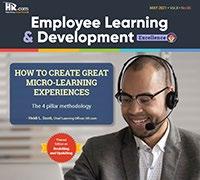
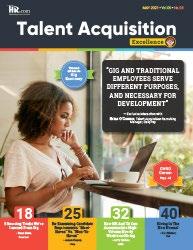

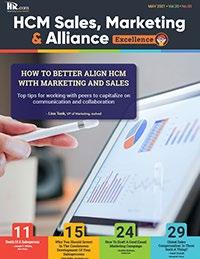



I regularly read and contribute to Leadership Excellence and Talent Management Excellence. I use many of the articles I read to augment my own presentations and I often share the articles with my clients. They are always quick, right on target for the latest issues in my field, and appreciated by my clients. If you want to stay up to date on the latest HR trends, choose a few of the different issues from the Excellence series of publications.





 Dave Ulrich
Rensis Likert Professor, Ross School of Business, University of Michigan Partner, The RBL Group
Julie Winkle Giulioni
Author, Virtual /Live Keynote Presenter, Inc.’s Top 100 Leadership Speakers
Dr. Beverly Kaye CEO, BevKaye&Co.
Dave Ulrich
Rensis Likert Professor, Ross School of Business, University of Michigan Partner, The RBL Group
Julie Winkle Giulioni
Author, Virtual /Live Keynote Presenter, Inc.’s Top 100 Leadership Speakers
Dr. Beverly Kaye CEO, BevKaye&Co.
WHY EXCELLENCE PUBLICATIONS?
We’re eager to hear your feedback on our magazines. Let us know your thoughts at ePubEditors@hr.com
The Future Of Skill Development: Learning Through Technologies
Embracing the future of employee learning and development
By Chirag Doshi and Channappa Jagadish, Thoughtworks
Intoday’s fast-paced digital landscape, continuous learning and upskilling have become essential for both individuals and organizations. Learning technologies are revolutionizing the approach to L&D, providing exciting opportunities for workforce development. The future of learning technologies, from self-paced online platforms to immersive virtual reality experiences, holds immense potential.
These platforms have transformed how individuals access and engage with learning tools, enabling employees to pursue education without disrupting their careers. With the freedom to set their own pace and schedule, individuals can effectively balance their professional and personal commitments. Additionally, these platforms have broken down geographical barriers, democratizing education and offering equal learning opportunities across organizations worldwide.
By integrating learning technologies into their training programs, companies can equip their employees with the necessary knowledge and skills to thrive in today’s dynamic business environment. Embracing the power of learning technologies is not only advantageous for the workforce but also crucial
for long-term organizational success in a rapidly changing world.
For instance, Thoughtworks has successfully implemented online learning platforms through collaborations with several certification programs. We also leverage a hire-and-train partner for graduates. We also have a learning platform that is customized for specific and unique learning journeys across roles and levels at the company. All of these collaborations and platforms allow Thoughtworkers to gain recognized credentials in specific technologies. Thoughtworks also fosters a culture of continuous learning and development through initiatives like the Women in Leadership Development program (WiLD), ensuring significant participation of women in global leadership development.
The Future of Learning Tech
Looking ahead, we expect personalized and adaptive learning experiences to take center stage at organizations. Leveraging artificial intelligence and machine learning algorithms, intelligent systems will analyze extensive learner data to deliver customized content, recommendations and tailored learning pathways. This personalized approach will enhance engagement, motivation and optimize learning outcomes.
Submit Your Articles Employee Learning & Development Excellence presented by HR.com JULY 2023 7 COVER ARTICLE
Virtual reality (VR) and augmented reality (AR) technologies will play a pivotal role in the future of learning. These immersive technologies will transport learners into virtual environments, engaging them in lifelike simulations that foster experiential learning. From conducting complex experiments to simulating unique data visualizations, VR and AR will provide hands-on experiences that were previously inaccessible. Organizations will benefit from realistic training scenarios, cost reductions associated with physical setups, and the ability for learners to practice skills in a safe and controlled environment.
Collaborative and social learning platforms are also expected to gain momentum. Learners will have the opportunity to connect with peers, subject matter experts, and mentors from around the world. Online
communities, forums, and social learning networks will facilitate knowledge sharing, problem-solving, and peer feedback. This collaborative approach nurtures a culture of continuous learning, encourages knowledge exchange and fosters a sense of community within organizations.
Mobile learning has already exceeded expectations and will continue to thrive. The Covid-19 pandemic accelerated the adoption of mobile learning, enabling learners to access educational content anytime, anywhere, using smartphones and tablets. With high-speed internet availability and the widespread use of mobile devices, individuals can seamlessly integrate education into their daily lives. This accessibility bridges educational gaps and promotes lifelong learning for individuals from diverse backgrounds and locations.
Data analytics will be the driving force behind the future of learning technologies. Learning platforms will collect and analyze data on learner behavior, progress, and performance, empowering organizations to gain deeper insights into the effectiveness of their training programs. These insights will identify areas for improvement and enable data-driven decisions to optimize learning experiences. Personalized learning pathways, targeted interventions, and adaptive content delivery will be facilitated through data analytics.
The future of learning technologies is bright, promising a transformative impact on the acquisition of knowledge.


Would you like to comment?

The Future Of Skill Development: Learning Through Technologies
Chirag Doshi is the Head Of People at Thoughtworks India.
Submit Your Articles Employee Learning & Development Excellence presented by HR.com JULY 2023 8
Channappa Jagadish is the Regional Head of L&D at Thoughtworks India and Middle East.
Overwhelming And Outdated Onboarding: Strategies For HR Departments To Improve Training For Today’s Workforce
5 ways to improve employee training
 By Christopher Pappas, eLearning Industry
By Christopher Pappas, eLearning Industry
Accordingto a recent employee experience survey run by eLearning Industry, 2 in 5 (43%) employees called their new hire training “outdated.” Unfortunately for those new hires,
that creativity and enthusiasm of getting a new job seem to wane once they sign on the dotted line. And more times than not, bad onboarding is to blame.
Also, another shocking statistic was that bad onboarding experiences led 1 out 3 new hires to regret their decision to join a company. To add to that, the State of The Employee Experience Report findings exposed a disconnect between employees’ desire for continued learning and employers that offered training opportunities, which were often seen as outdated, not relevant and “a waste of time.” In fact, roughly half of respondents in healthcare (51%), technology (50%) and finance and insurance (49%) felt overwhelmed during this time.
Submit Your Articles Employee Learning & Development Excellence presented by HR.com JULY 2023 9
As you can understand, it’s imperative to try and identify upcoming corporate culture trends and strategies that HR departments can leverage to improve training and create better employee experiences. If you want to increase employee retention rates and keep top talent, you have to do more than offer mundane training and outdated guides.
Let’s take a closer look at some of the best strategies HR teams can use to improve training beyond onboarding.
Best Strategies HR Teams Can Follow To Improve Training
1. Engage with your employees and gather employee feedback
We cannot highlight enough the importance of embracing employee feedback. Gathering, analyzing and acting upon consistent employee feedback in real-time is the foundation of improving the employee experience. From recruiting and onboarding to ongoing engagement plans and exiting, by asking employees to share their opinion, companies can tackle issues sooner than later.
Feedback is the cornerstone to training and development, leading to a much more positive employee experience. For example, you can use engagement or training software to send out surveys and pulse polls to learn more about how employees feel at a given
moment. The insights you gather can help improve your company culture and prepare for the future. Or maybe you have many Gen Z employees or Millennials and you need to bring your training online and add some gamification to the mix for better engagement.
Good onboarding means your company should make new hires feel welcome. Additionally, they must feel valued and comfortable at their new jobs, or else they might walk away. Have you included compliance, clarification, confidence, connection and culture into your onboarding process? If you don’t ask, you won’t know. Plenty of times employees share ideas you couldn’t even imagine.
2. Build a cultural vision for your company, define values, identify issues
Company culture is such a powerful tool, and good HR teams know that. Your company culture can impact not only recruiting efforts and employee morale but also impact sales and profits. What you stand for as a company and how your employees act based on your core company values matters. So, when you have a great company culture, you are able to attract people who want to work or do business with your company.
It’s also a great way to inspire your employees to be more positive and productive. Think of it as a well-thought-out way of keeping employees happy and reducing turnover. Smart organizations know that a strong
and positive company culture can be a force to reckon with. If you haven’t already, consider starting your cultural transformation –and remember to let new hires know about your values from day one.
3. Set goals and create metrics to measure progress and business impact
If you’re offering training just because you heard it’s good, maybe you should think this through. There should always be a plan as to why you’re offering training opportunities in the first place. Maybe you’re focusing on increasing employee retention, or you want to attract top talent and need more incentives. Or perhaps you’ve made a clear decision to grow your business by X % in the next five years and need to work on that. Whatever the case, your training initiatives will be more effective when you have goals and objectives in mind.
Gather stakeholders and decision-makers in your organization and decide how you envision your business two or more years from today. Ensure you get input from managers and employees, as this gives you better chances of fulfilling expectations and achieving your goals. Conducting industry research, getting customer feedback, changing regulations and defining skills needed to future-proof the business will also play a big part in your decisions. When your goals go hand in hand, it’s much easier to complete your organization’s mission.
Overwhelming And Outdated Onboarding: Strategies For HR Departments To Improve Training For Today’s Workforce
Submit Your Articles Employee Learning & Development Excellence presented by HR.com JULY 2023 10
4. Match training and development with employee and management goals
For training and development programs to be successful, HR teams need to eliminate the mismatch between the training goals and the objectives of the organization. If you want to maximize the benefits of corporate training, you must find common ground between training your teams and getting results for the business.
The biggest problem of all training programs? Connecting the learning outcomes to the business goals of your company. So, what you need to do is to first identify your company’s objectives. Then you can formulate learning goals based on the organizational objectives. Afterward, you can turn the set learning goals into learning activities.
But don’t let them stray from your organizational objectives. For a successful training program, you need to create the curriculum and learning materials around these activities. If you want positive business outcomes, you need to make the investment and do the work. Either way, a training needs analysis is a must.
5. Consider leveraging technology like HR software, engagement software, and LMS tools
Just saying you have goals isn’t enough. You need to find a way to keep them in order and track your progress. Also, you have
to be able to see the impact of your training initiatives on the business. To make your life easier, you can leverage some of the best LMS tools, employee engagement software, and HR software in the market. Do everything in your power to deliver the best employee experience and have employees wooed from day one.
By utilizing the right tools, you’ll manage to motivate people and get them to focus on working together. Using tech to prioritize goal setting and align training to business needs will not only propel you forward, but it will also fuel ambition and help everyone believe in the mission and the vision of your company’s future.
Ultimately, goals keep everyone accountable and tell you what you truly want. When setting goals, keep in mind they have to be SMART (specific, measurable, attainable, relevant, and time-bound). Remember to celebrate milestones as you’re getting to your end goal. By tracking and analyzing progress towards your goals, you can stay true to your mission and progress towards success and growth.
Summing Up
Companies that assess their current training offerings and focus on finding ways that will improve training and development will benefit all employees and leaders alike. When you improve the employee experience via training and development, HR teams can boost a company’s
productivity and performance. And if that alone isn’t enough, you get to future-proof your business by equipping employees with all the skills needed.
It’s no secret that when you invest in your people, they will invest in your business and will want to stay on board for the long run. It’s not just that it saves you time and money. Having effective training programs also attracts top talent and is the key ingredient to scaling your business.
Christopher Pappas is the Founder of eLearning Industry. Christopher, who holds an MBA, and an MEd (Learning Design) from BGSU, is an eLearning blogger, EduTechpreneur, eLearning analyst, speaker and social media addict.
 Would you like to comment?
Would you like to comment?
Overwhelming And Outdated Onboarding: Strategies For HR Departments To Improve Training For Today’s Workforce Submit Your Articles Employee Learning & Development Excellence presented by HR.com JULY 2023 11
Shaping The Future Of Learning: The Role Of Technology In Organizations
Learn how technology impacts employee development
By Anjan Pathak, Vantage Circle
Introduction
The world of technology is rapidly evolving, and organizations face unprecedented challenges and opportunities. As technology makes its way into organizations, they must proactively adapt to stay competitive and drive meaningful impact.
One significant challenge is the rapid pace of technological changes in today’s business environment. Companies must keep their employees updated with the latest knowledge and skills to stay competitive.
Wondering why?
It is because traditional learning methods often struggle to keep up with the speed of change. This has caused a massive shift in how organizations function and gain a competitive (technological) edge over others.
Traditional, in-person training sessions can be costly, especially considering travel expenses, venue rentals, and instructor fees. Learning technology offers a more cost-efficient alternative, reducing training
delivery expenses while providing engaging and interactive learning experiences.
It is important for organizations to recognize and harness the potential of this new era. The world of learning is undergoing a profound transformation, and we must adapt and embrace this change.
As the co-founder of Vantage Circle, I have witnessed firsthand the tremendous impact that learning technology can have on organizations. It has been inspiring to see companies embrace learning technology and witness its transformative effects on their workforce and overall business success.
So taking the technological revolution into context, let us first understand what I mean when you say learning technology in the workplace.
What Is the Purpose of Learning Technology in the Workplace?
Learning technology in the workplace aims to transform traditional training and development methods by leveraging digital innovations to deliver more efficient, engaging, and effective learning experiences.
Submit Your Articles Employee Learning & Development Excellence presented by HR.com JULY 2023 12 Top Pick
● It enables employees to access learning materials anytime and anywhere, fostering a culture of continuous learning.
● Learning technology enhances engagement, knowledge retention, and application by incorporating interactive elements like multimedia content, simulations, gamification, and social collaboration.
Benefits of Having Learning Technology in Workplaces
In today’s fast-paced and ever-changing world, the ability to embrace and effectively utilize technology in the workplace has transitioned from being merely advantageous to becoming an absolute necessity for individuals and organizations alike.
1. One of the key benefits I have observed is a significant improvement in employee engagement and motivation
Learning technology offers interactive and immersive learning experiences that capture employees’ attention and make learning more enjoyable.
By incorporating gamification elements, such as quizzes, challenges, and rewards, learning technology creates a sense of excitement and accomplishment, driving employees to participate actively and excel in their learning journeys.
2. Learning technology has proven to be a game-changer regarding accessibility and flexibility. Traditional training methods often involve scheduling constraints, limited resources, and geographic barriers.
However, learning technology breaks down these barriers by providing on-demand access to learning materials, allowing employees to learn at their own pace and convenience.
Whether it is an employee working remotely or someone in a different time zone, learning technology ensures that learning opportunities are readily available to all.
3. Learning technology provides a scalable solution by allowing organizations to deliver training materials and courses to a large number of employees simultaneously.
This ensures that every employee receives the necessary knowledge and skills to perform their roles effectively, regardless of the company’s size or geographic distribution.
4. Learning technology leverages digital innovations to deliver more efficient, engaging, and effective learning experiences.
It enables employees to access learning materials anytime and anywhere, fostering a culture of continuous learning.
This equips them with the knowledge, skills, and mindset needed to embrace new technologies, collaborate efficiently, make data-driven decisions, and drive innovation within the organization.
5. Learning technology provides valuable insights and analytics that can drive continuous improvement.
Through data collection and analysis, organizations can identify knowledge gaps and measure the effectiveness of training programs.
It also helps you to make data-driven decisions to enhance future learning initiatives.
Now, while we have explored the remarkable benefits of learning technology, one thing to remember is that one-size-fits-all approaches to training simply do not cut it anymore.
The days of generic, one-dimensional learning experiences are long gone. We must embrace the power of tailored learning technology.
By customizing the learning journey for each employee, we ensure that the content, format, and pace of learning align with their unique needs, preferences, and skill gaps.
Shaping The Future Of Learning: The Role Of Technology In Organizations
Submit Your Articles Employee Learning & Development Excellence presented by HR.com JULY 2023 13
This customized approach ensures that employees receive the most relevant and impactful learning content, making their learning experiences more engaging and effective and ultimately empowering them to reach their full potential.

Impact of Learning Technology on Organizations
As I reflect on the impact of learning technology on organizations, it becomes evident that we are witnessing a monumental shift in how we approach employee development.
The future impact of learning technologies in organizations; it goes beyond just augmented reality (AR) and virtual reality (VR).
We can expect a convergence of various cutting-edge technologies to shape the learning landscape.
● Firstly, artificial intelligence (AI) will be pivotal in personalizing learning experiences. AI algorithms will analyze employee data, assess skill gaps, and deliver customized learning content tailored to individual needs.
● Additionally, gamification will continue to gain prominence. By incorporating game elements into learning platforms, organizations can boost motivation and foster healthy employee competition, making learning more enjoyable and effective.
● Mobile learning will become increasingly prevalent. With the ubiquity of smartphones and tablets, employees can access learning materials on the go, enabling flexible and convenient learning experiences.
● Collaborative learning will thrive in the future. Learning technologies will facilitate employees’ social interaction and knowledge sharing, creating a collaborative and engaging learning environment.
Conclusion
My message would be simple; embrace the learning revolution. The future impact of learning technologies in organizations is promising.
With the integration of AI, gamification, mobile learning, data analytics, and collaborative platforms, we can expect a paradigm shift in employee development.
This will lead to a highly skilled and adaptable workforce that drives organizational success in an ever-evolving business landscape.
Coming from the domain of employee engagement, I am truly interested to see how learning technology will propel organizations forward, fostering a culture of continuous growth and positioning them at the forefront of innovation and success.
Anjan Pathak is the CTO and Co-Founder of Vantage Circle. Anjan is a technology leader with over two decades of experience building and deploying cross-channel web applications.

Shaping The Future Of Learning: The Role Of Technology In Organizations
Would you like to comment?
Submit Your Articles Employee Learning & Development Excellence presented by HR.com JULY 2023 14
Hybrid Learning: 7 Ways To Ensure No Learners Are Left Behind
Mastering hybrid learning
By Karen Vieth, InSync Training
Weall know that the learning environment has vastly changed as a result of the pandemic. Hybrid learning, combining virtual with face-to-face instruction, is becoming common. It is easy to think that hybrid is the best of both worlds – and combining them should be easy.
But what you may not realize when transitioning to hybrid is that it is not just bolting on virtual with face-to-face instruction -- it is a completely new ball game that only those in the know will be able to survive (and thrive) in.
Hybrid can be successful for everyone – it just takes planning. Here are 7 ways you can help ensure success, plus some (unsolicited) advice on how to get it done.
1. Have every individual log onto a personal device, no matter how they are participating. This is critical to the success of a hybrid program. Even learners in the F2F environment should have laptops logged into the virtual classroom. Then everyone can participate in shared activities and contribute to chat conversations. It creates a consistent experience.
Pro Tip: In an in-person classroom, the virtual classroom should be projected with the slides running through the platform. Encourage all
questions to come through chat before they are spoken aloud – this draws in the remote participants.
2. Re-imagine the role of the producer as the learner advocates for all participants, no matter how they are participating. Ideally, the producer is co-located with the facilitator and actively manages the virtual experience – ensuring that the voices of remote learners are ‘heard’ by everyone. The producer can especially help a multicultural cohort by repeating and rephrasing activity instructions, using chat to summarize the in-person experience, and being an overall instructional partner. The producer is critical to the success of hybrid.
Pro Tip: The facilitator and producer need to work together as an instructional team, and when the producer ‘interrupts’ the flow of the program, the facilitator needs to trust it is for the good of all the learners. Rehearsal and relationship building is key.
3. Incorporate learning technologies (video, breakout rooms, whiteboards, third-party integrations) that are effective for all environments. While virtual classroom platforms like Zoom and MS Teams have more limited functionality on mobile devices, incorporating products like Mentimeter and Beekast into your VILT designs can engage learners on smartphones in the same way that they engage learners on less mobile machines.
Submit Your Articles Employee Learning & Development Excellence presented by HR.com JULY 2023 15
Pro Tip: Rehearse. Take the time to go through the activity as a learner and as a facilitator to check that everything works as planned. This will help to avoid operating errors like knowing exactly when to click so you do not spoil a quiz by revealing the answers.
4. During content development, include activity design options that are effective for a hybrid learning audience. There should be options for working individually, working with online groups, and working with a group of people in the same room.
Pro Tip: Do not plan on co-located learners to interact well with remote learners in breakout activities. It is hard to manage and has less of an impact. Breakout activities should be designed in a way that makes interaction easy – not more complicated by learners having to figure out how to maximize the engagement for other people.
5. Facilitate in a way that maximizes emotional engagement and psychological safety of all learners. Emotional engagement is about safety. All competent facilitators know to keep an eye on their learners, but are they really “seeing” the individuals? Facilitators can gauge whether or not people are actually listening using basic techniques, but how do we know they are actually learning? It is even more complicated in a hybrid learning environment.
Pro Tip: One way to ensure learners are emotionally engaged is to practice active and reflective listening. This is not as obvious as it might sound – the overabundance of webinars over the last 20 years has taught facilitators that the virtual classroom is about us talking, and not listening to learners. The facilitator, with the support of the producer, needs to ensure the learners are contributing to the class. This creates a sense of belonging and starts to foster community.
6. Adapt activities ‘in the moment’ to accommodate the actual audience composition. Virtual facilitators are nimble facilitators! Be ready to pivot to maximize the experience for everyone. Use the producer to help you!
Pro Tip: Run some kind of icebreaker at the beginning of a session to get an understanding of the group composition.
7. Make hybrid a part of your blended learning model. As your learner groups become more remote and multicultural, blended learning becomes a more reasonable solution. Blend self-directed and ‘remote group’ learning activities into the program to connect learners in between live sessions. Learners can work on self-directed activities in a language that works for them at a time that works for them, and also collaborate with ‘local’ colleagues.
Pro Tip: Intellectual engagement will certainly be stimulated when the “together” time is used to deepen learning and practice, while self-directed content is used to reinforce foundational materials.
This approach will help your learning organization create effective and engaging hybrid virtual learning experiences and ensure all aspects of the learner experience are accommodated - and no learners are left behind.
Karen Vieth is VP of Virtual Learning Solutions at InSync Training
Would you like to comment?

Submit Your Articles Employee Learning & Development Excellence presented by HR.com JULY 2023 16
Hybrid Learning: 7 Ways To Ensure No Learners Are Left Behind
The Future of Learning Technologies





Sponsored by: Optimize learning technologies to improve organizational learning culture
2023 INTERACTIVE JULY 2023 Special Research Supplement July 2023
Survey conducted by: Sponsored by:
By Amit Gautam, CEO,
Learn
By Vanessa Ogibowski, Senior Manager of Product Marketing, Absorb Software

7 Considerations When Implementing a Hybrid Virtual Learning Strategy
By Jennifer Hofmann, Founder & President, InSync Training


Taming the AI Beast: How Artificial Intelligence Can Optimize L&D
By Jeff Fissel, VP of Learning
Learning Technologies
Group
Solutions,
The HR Research Institute, powered by HR.com, the world’s largest social network for Human Resources professionals, is a key part of our mandate to inform and educate today’s HR professionals. Over the past three years, the HR Research Institute has produced more than 85 exclusive primary research and state of the industry reports, along with corresponding infographics in many cases, based on the surveys of thousands of HR professionals. Each research report highlights current HR trends, benchmarks, and industry best practices. HR Research Institute Reports and Infographics are available online, and always free, at www.hr.com/featuredresearch

The Future of Learning Technologies 2023 19 RESEARCH REPORT SUMMARY
ARTICLES
34
Future of Learning: Personalization, AI Innovations, and Transformative Strategies
The
23
Invince
INDEX
39
Smarter with AI-Powered Learning
29
The Future of Learning Technologies 2023
Optimize learning technologies to improve organizational learning culture
Sponsored by:



Survey conducted by:
Organizations are transforming at lightning speed fueled largely by new technologies. But of all the functions undergoing these changes, one of the most critical is the way we prepare our workforce for the future.
Imagine delivering training today without robust virtual communication platforms or online learning systems. And reskilling and upskilling have become top business priorities.
Twenty-five percent of the skill sets required to perform many jobs have changed since 2015 and this number is expected to double by 2027. Predicting what new skills will be needed, delivering training just-in-time and as part of the daily workflow, AI-driven content creation, and determining the impact of our training investments are just a few examples of learning technology solutions that will consume a larger percentage of our corporate learning budgets.
In HR Research Institute's recent 'The Future of Learning Technologies 2023' report, we take a closer look at learning technology trends and practices through the eyes of HR professionals.


Here are a few highlights from the report.
The Prevalence and Relevance of Learning Technologies
Finding: The majority say learning technologies play a critical role in learning and development
The past few decades saw the use of technologies become commonplace within the learning function. Technology is radically transforming how organizations prepare workforces for the future and help employees grow. Our respondents agree; 83% agree or strongly agree that technologies currently play a crucial role within L&D and just 8% actively disagree with this statement.
19 RESEARCH REPORT SUMMARY STATE OF THE INDUSTRY RESEARCH
Exclusive Research by The HR Research Institute
Career Development is a Key Aspect of Learning and Learning Technologies
Finding: Employee career development and new skills development are driving corporate learning
Employee career development has always been critical to an organization’s current and future business performance. However, with skills shortages, rapidly changing business models,
and the number of jobs requiring reskilling or upskilling, it has now become even more crucial. In fact, respondents rate career development as the most important factor driving learning in their organization (62%). Career development benefits both the organization and its employees. It helps the organization with a pipeline of ready talent for current and future talent needs while increasing retention. For employees, it makes them feel valued and increases a sense of belonging.
What four factors are most impor tant in driving learning in your organization? (select up to four)
About one-third cite retaining employees as a driver of learning
20 RESEARCH REPORT SUMMARY STATE OF THE INDUSTRY RESEARCH
0 10 20 30 40 50 60 70 80 62% 49% 47% 40% 36% 34% 28% 23% 20% 16% 12% 9% Employee career development New skills development Increased employee engagement Regulatory compliance Retain employees Boosted job performance Skills maintenance
culture change
on investment Digital transformation
agility
competitive advantages
Facilitate
Return
Improved
Improved
Finding: Learning technologies will better aid career development in the future
Since career development is the top driver of learning, it makes sense that 59% expect learning technologies will better aid career development over the next three years. Learning technologies
may better enable organizations to develop career paths based on forecasted business needs. Employees will more easily be able to match their skill sets and interests with their career objectives and automatically suggest learning paths to help prepare them for future careers.
How do you feel learning technologies will change in your organization over the next three years? (select all that apply)
Better aid in career development of employees
More focus on skills-based learning and development
Learning will be more personalized
Greater integration of social and collaborative learning features
More learning will occur on mobile devices
More emphasis on the use of data analytics for learning
Become more focused on soft skills training
Artificial intelligence will be more integrated into L&D
LMS will increasingly become part of a larger learning platform
Allow for greater facilitation of peer-to-peer learning
Use more gamification
Micro-learning will become standard on most systems
Allow for seamless live learning (such as integration with webinar tools)
Augmented and virtual reality will play a growing role
More stand-alone learning solutions will come to market
Employ metaverse for education
will change by being more personalized
21 RESEARCH REPORT SUMMARY
STATE OF THE INDUSTRY RESEARCH
0 10 20 30 40 50 60 59% 49% 45% 43% 42% 42% 40% 38% 36% 36% 33% 31% 31% 29% 18% 14%
Barriers and Benefits of Learning Technologies
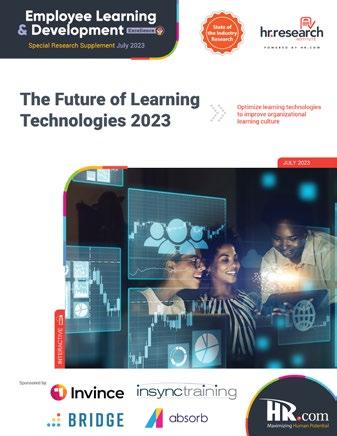
Finding: While limited collaboration functionality is the most common weakness of learning systems, no weakness was selected by a majority
We asked respondents to choose the top four weaknesses of their organization’s learning
systems. While no weakness was selected by more than half of respondents, 46% feel their learning systems have limited collaboration functionality. A further 39% say that a lack of personalization is a weakness and 35% say a poor ability to integrate with other systems.

To learn more, we invite you to download and read the research report today:
Read the Research Report

22 RESEARCH REPORT SUMMARY STATE OF THE INDUSTRY RESEARCH
The Future of Learning: Personalization, AI Innovations, and Transformative Strategies
By Amit Gautam, Invince
Introduction
The field of learning and development (L&D) is constantly evolving to meet the changing needs of organizations and individuals. This article explores some macro trends in customer education and employee development, showcases how leading companies have leveraged L&D to overcome challenges, highlights emerging AI innovations in L&D, and discusses important questions and considerations for the future.
Macro Trends in Customer Education & Employee Development:
Personalized Learning: Organizations are increasingly tailoring training programs to meet the unique needs and preferences of individual learners. By personalizing content, delivery methods, and assessments, companies can enhance engagement and knowledge retention.
Microlearning: Bite-sized learning modules have gained popularity as they enable learners to consume information in small, easily digestible chunks. This approach improves knowledge
retention and allows for flexible learning, fitting into employees’ busy schedules.
Blended Learning: The integration of multiple modes of training, such as online modules, virtual classrooms, and face-to-face interactions, creates flexible and comprehensive learning experiences. Blended learning combines the advantages of various formats to optimize learning outcomes.
Gamification: Incorporating game elements into training programs enhances engagement and motivation. By introducing rewards, challenges, and interactive elements, organizations can create an immersive learning environment that encourages active participation and drives knowledge acquisition.
Case Study 1: Model N - Transforming Customer Learning Experience
Model N, an American software company with 1000+ employees and 190+ customers worldwide, identified that customers not using or incorrectly using their software due to complexity posed a significant risk to their bottom line.

STATE OF THE INDUSTRY RESEARCH 23 ARTICLE
To address this challenge, Model N:
● Adopted UpsideLMS to create a subscriptionbased, self-paced training model.
● Offered personalized secure learning portals to each subscribed customer, including role-based curricula and on-demand learning content and tools.
● Achieved faster time to revenue with quicker training, implementation and customer onboarding.

● Achieved significant improvement in customer retention by providing autonomy and ease of learning.
Case Study 2: ISS - Shaping Development Program for a Geographically Dispersed Workforce
ISS, a leading global provider of facility services with 500k+ employees in 77 countries, faced
challenges in providing centralized training for its dispersed offices and addressing individual learning and development (L&D) needs in each country.
To overcome these challenges, ISS:
● Established a scalable and flexible L&D program for employees worldwide.
● Implemented tailor-made training programs that reduced costs, training time, and increased operational efficiency.
● Leveraged UpsideLMS (by Invince), resulting in a significant increase in the number of learners and course completions.
AI Innovations in L&D: The integration of artificial intelligence (AI) in L&D is revolutionizing the learning experience.

STATE OF THE INDUSTRY RESEARCH 24 ARTICLE
Here are some emerging AI innovations:
Intelligent Chatbots: AI-powered chatbots can handle common queries, deliver on-demand training materials, and suggest personalized recommendations based on learners’ needs. Chatbots enhance learner support and engagement.
Virtual and Augmented Reality (VR & AR): VR & AR combined with AI is enabling immersive and engaging learning experiences that simulate work environment, also facilitating learning for the differently-abled
Example 1: Walmart’s VR Training Program: Walmart has developed a VR training program to simulate real-life scenarios for employees. This program provides immersive experiences and enables employees to practice their skills in a safe and controlled environment.

Conversational and Generative AI: AI tools are now capable of generating written and visual content, designing interactive learning modules, and even automating content translation and localization. These AI-powered tools streamline content creation and enhance learning experiences.
Adaptive AI Learning Platforms: These platforms can utilize predictive analytics to assess performance, identify knowledge gaps, and provide personalized recommendations to a multigeneration learner pool. These platforms can also predict future skill gaps and training needs by analyzing historical data.
platform to transform written training materials into videos with human faces and voice-overs. This approach facilitated employee training globally and ensured consistent delivery of content across languages.
Example 3: Microsoft’s Seeing AI: The app narrates the world around us in a language of our choice. It describes almost everything from handwriting, products, person, scene, etc. that’s in front of the camera. This largely helps the differently-abled navigate their day with ease.
Important Suggestions and Considerations for the Future
As AI continues to shape the future of learning, here are a few concerns that arise and the way they could be addressed:
Ethical Concerns:
● Establish comprehensive data protection policies and protocols to safeguard personal information and address privacy concerns related to AI usage.
● Conduct regular audits and assessments of AI algorithms to identify and mitigate biases, ensuring fairness and inclusivity in decisionmaking processes.
● Foster transparency by providing clear explanations of how AI algorithms work and the data they rely on, promoting trust and understanding among users.
● Encourage ethical AI practices by incorporating ethics training and guidelines for AI developers and users, emphasizing the importance of accountability.
Example 2: Bosch’s AI-made Videos for Training: Bosch utilized an AI-powered video creation
STATE OF THE INDUSTRY RESEARCH 25 ARTICLE
Employee Anxiety:
● Implement proactive communication strategies to educate employees about the benefits of AI, emphasizing its role as a supportive tool rather than a threat to job security.
● Offer reskilling and upskilling programs to help employees adapt to technological changes and develop new skills that complement AI capabilities.
● Foster a culture of continuous learning and professional growth, showcasing opportunities for career development that arise from working alongside AI technologies.

● Highlight the unique value of human skills such as creativity, critical thinking, and emotional intelligence, emphasizing how these qualities complement AI and are irreplaceable in certain areas.

Bridging the Generational Gap:
● Create inclusive learning environments that cater to the diverse learning styles and preferences of different generations,
incorporating a mix of traditional and technology-driven approaches.
● Implement mentorship programs where employees from different generations can connect, exchange knowledge, and learn from each other’s experiences.
● Foster a culture of collaboration and knowledge sharing by promoting crossgenerational team projects and initiatives that encourage the exchange of ideas and expertise.
● Provide training and support to help older employees adapt to new technologies and younger employees understand the value of experience and institutional knowledge.
Conclusion
The future of learning lies in personalized approaches, AI innovations, and transformative strategies. By embracing personalized learning, leveraging AI advancements, and addressing related concerns, organizations can create impactful L&D programs that drive employee development and customer success.
Amit Gautam is the CEO of Invince (formerly UpsideLMS). With over two decades of experience across IT and learning technologies, Amit has a wealth of knowledge and hands-on experience in learning management solutions, and learning technology solutions. An IIM and NIT alumnus, Amit is a man of a few words with intellect and business acumen aplenty. He’s a regular in the news and media, and has been profiled by leading industry publications.
Would you like to comment?
STATE OF THE INDUSTRY RESEARCH 26 ARTICLE

Sponsor any of this year’s state of the industry research topics and come away with your very own affordable and branded research report and infographic, establish yourself as an industry thought leader by presenting at a one-day Virtual Event, and bolster sales through the generation of qualified leads.

July 12-13, 2023
Sept 6-7, 2023
Learn more at: hr.com/FutureTalentAcquisition

Align your brand with this year’s State of the Industry
HR topics and showcase your expertise
hot
list of hot industry research topics below and give us a call to get started. A State of the Industry Research & Virtual Event Sponsorship Opportunity Contact us today to get started at sales@hr.com | 1.877.472.6648 | hr.com/industryresearch
State of
the Workplace Virtual Event
See
The
Human Experience in
Aug 16, 2023
Virtual
Learn more at: hr.com/ HumanExperienceResearch The Future of Performance Management
Event
Virtual Event
Learn more at: hr.com/PMResearch The Future of Talent Acquisition
Learn Smarter with AI-Powered Learning
By Vanessa Ogibowski, Absorb LMS

We have all heard the saying work smarter not harder, and while we have been saying it for much longer than artificial intelligence (AI) technology has existed, it really does ring true for AI. AI has revolutionized the world we live in; from the content we consume on our TVs at home to the way we learn today at work. As the learning industry continues to explore the use of AI, it is no surprise it has brought a paradigm shift in the landscape of learning and development (L&D) that is making everyone smarter.
AI is corporate learning through personalized experiences, intelligent content curation, generative content creation, automated assessments, immersive simulations, and datadriven insights. AI adoption in corporate learning has been steadily increasing, with organizations recognizing its potential for enhancing employee training and development. According to IBM, 35-50% of organizations are using AI to increase employee learning and development to address labor or skills shortages.
AI-powered learning management systems (LMS) have brought significant improvements to human resources (HR) and learning functions. Everyday HR initiatives like onboarding, skill development, and compliance have become simpler and more engaging with the help of powerful AI features.
These intelligent systems streamline operations and automate essential tasks, resulting in a substantial decrease in HR teams' workload.
As an HR leader, what does AI bring to the table? Let us see how AI is shaping five core areas of corporate learning and enabling you to get your jobs done faster with more efficiency.
1. Streamlining Employee Onboarding
In today's fast-paced work environments, the smooth integration of new employees is crucial. Modern, AI-driven LMS platforms are transforming the onboarding process, delivering personalized, and efficient experiences that set employees up for success from day one.
Creating a strong first impression for new employees/learners by tailoring courses to specific job functions, roles, and locations is critical. Ensuring they are guided to the right learning path for essential onboarding is important, but when fostering a culture of learning it is also important your learners are curious and find the content they want to consume. This is where AI-powered intelligent search comes into play, this makes it easy for employees to find additional relevant content to help them be successful in their job. AI-driven training prompts learners, guiding them through "what's next" in their path, and is another way that learning becomes simpler and smarter for employees.
STATE OF THE INDUSTRY RESEARCH 29 ARTICLE
With the learner experience covered, from an admin side, it can be time-consuming to ensure your onboarding program is fully set up. Of course, they can use automation to enroll new employees integrated with your human capital management (HCM) system to enable a seamless data exchange for quick course assessment, recordkeeping, and real-time data collection. Taking that data and measuring the success of your onboarding program can be done by using core reporting, but to gather deeper analysis, including trends and forecasting, using an LMS with built-in business intelligence (BI) can help offer insights to employee engagement, retention, and when combined with HCM data, first-year attrition and time-to-competency.
AI can support employee training and development during onboarding. Intelligent learning programs can provide adaptive and customized training programs, ensuring new employees acquire the necessary skills efficiently.


2. Modernizing Internal Communication with Employees
As an HR professional sharing important company updates during townhalls and lunch-and-learn sessions is table stakes when it comes to keeping your employees informed and engaged with the company. If you slightly reimagine it, you can think of these sessions as hybrid instructor-led courses on the current state of the company, which is why using an LMS to help conduct, host, and track these sessions is the perfect opportunity.
Without the integration of a modern LMS solution, internal communication processes can become tiring, relying on manual methods like meeting invites and scattered storage of content. Tracking participation and completion of courses becomes tedious, hindering the ability to measure engagement. Fortunately, auto-enrolling employees using HCM-integrated LMS is a breeze. Using an AI-powered LMS tagging and grouping these sessions for the learner is intuitive for users of all levels.
STATE OF THE INDUSTRY RESEARCH 30 ARTICLE
And that is just basic AI power. If you become even more imaginative, you could easily use content creation generative AI to turn a portion of a company update into an interactive course in the LMS to ensure your current employees and any new employees are kept informed and engaged.
No wonder the world is rapidly embracing the unparalleled power of AI. A Forbes study clearly underscores this fact: Over 60% of business owners believe AI will increase productivity. Specifically, 64% stated that AI would improve business productivity, and 42% believe it will streamline job processes.
3. Maximizing Employee Performance Through Skill Development
One of the most natural fits for an AI-powered LMS is for skills development. It is no secret that if you do not have a strong skills or performance plan for employees the ability to retain them will be significantly harder. AI enhances employee performance through skill development by providing various ways of personalized learning paths resulting in targeted skill enhancement and improved performance outcomes.
Advanced LMS platforms enable organizations to post internal job opportunities, fostering growth and addressing skill gaps effectively. By defining the scope of upskilling and reskilling initiatives, organizations can bridge crucial skill deficiencies by recommending skills content based on the learner’s role, assessment, course history, and more.
learner around their skill and adjust their learning path based on all the same attributes mentioned above. Never let the learner feel lost in their learning journey again!
4. Fostering a Culture of DE&I
Fostering an inclusive culture positively impacts the overall company culture, creating an environment where collaboration, creativity, and innovation thrive.
AI can be used to help recommend diversity, equity, and inclusivity (DE&I) courses that best align with the learner based on their previous search, course history, and more. Another fascinating use of AI is with natural language the learner could ask the LMS to do a task, such as “enroll me in all DE&I courses released this month” and be automatically added to the courses that are found.
Without AI, a DE&I initiative is dependent on standardized, one-size-fits-all courses versus an automated and personalized experience for the learner and admin. Incorporating an AI-powered LMS will help with continuing to foster a culture of inclusivity.

5. Achieving 100% Compliance
And you can even take that a step further with the power of AI, with the idea of a Learning GPS – basically the ability to take the data from that
AI will help meet compliance training through technology by automating processes, delivering personalized training content in relation to compliance, facilitating real-time monitoring and reporting, and ensuring up-to-date and accurate training material to meet standards and regulations. AI-powered systems enhance efficiency, effectiveness, and accuracy in compliance training, reducing administrative burdens and improving overall compliance outcomes.
STATE OF THE INDUSTRY RESEARCH 31 ARTICLE
One of the most effective ways is through the AI automation of manual tasks, such as course enrollments, progress tracking, and certification management, saving time and improving efficiency in compliance training processes.
AI algorithms analyze employee data and performance to deliver personalized compliance training content, ensuring that each employee receives training tailored to their specific needs and roles.
AI-powered LMS platforms enable real-time monitoring of compliance training progress, allowing organizations to track completion rates, identify areas of non-compliance, and generate comprehensive reports for audits and regulatory purposes. AI analyzes historical data and patterns to provide predictive insights, helping organizations identify potential compliance risks and take proactive measures to prevent violations.
These AI-driven capabilities in LMS platforms enhance the effectiveness, accuracy, and efficiency of compliance training, enabling organizations to meet regulatory requirements and mitigate compliance risks more effectively.
The Future Is Now
Many organizations are already harnessing some of the power of AI in their LMS, but as advancements are made and the future-forward examples shared become proven tech, AI will become the core engine of HR professionals’ learning strategies.
Introducing AI-driven Absorb LMS for simplified learning and effective administration. Absorb LMS leverages AI algorithms and capabilities to deliver personalized learning paths, adaptive assessments, and intelligent content curation. By analyzing learner data and preferences, Absorb LMS tailors the learning journey for each learner, ensuring that the content is relevant, engaging, and aligned with their specific needs and goals.
Adaptive assessments flex to learners' performance levels, providing targeted feedback and guidance for continuous improvement. Furthermore, AI-driven content curation ensures that learners have access to the most appropriate and up-to-date resources, including third-party materials, maximizing the relevance and effectiveness of the learning content.
For more information on Absorb LMS, please visit https://www.absorblms.com/why-absorb/.

Vanessa Ogibowski is the Senior Manager of Product Marketing at Absorb LMS. Vanessa brings over eight years in B2B SaaS technology. Driven by understanding and solving customer problems, she has successfully launched multiple SaaS products focused on delivering knowledge to the global workforce. Throughout her career, she has specialized in high-growth product go-to-market, impactful sales enablement and engaging customer advocacy.
Would you like to comment?

STATE OF THE INDUSTRY RESEARCH 32 ARTICLE
MEET PERSONALIZED AND RELEVANT LEARNING THAT’S SMART AND SIMPLE
Personalized and relevant learning doesn’t need to be complex to create, roll out, and consume. Make learning simpler and smarter with AI to accelerate your corporate learning like you’ve never imagined before.



• Personalized recommendations
• Automated administration

• Gamified engagement
• Intelligent searches
• In-depth data analysis
• Intelligent content programming
absorblms.com ©2023 Absorb Software Inc and/or its subsidiaries or affiliates. All rights reserved. Absorb LMS is AI-powered and purpose-built for an engaging learner experience and efficient administration. Empower learners to discover the knowledge needed to do their jobs.
7 Considerations When Implementing a Hybrid Virtual Learning Strategy
 By Jennifer Hofmann, InSync Training
By Jennifer Hofmann, InSync Training

In May 2023, the Wall Street Journal reported that the number of companies requiring employees to work full-time in the office declined to 42% from 49% compared to last year and most companies have “settled into a hybrid work strategy.”
This hybrid model of working is driving a virtual model of learning. The “new normal” has instigated a shift in the way organizations conduct training, with virtual learning being an obvious solution. However, as we move toward a post-pandemic world, virtual learning alone falls short; we need hybrid virtual learning. Specifically, we need a strategy that blends virtual instructor-led training (ViLT) and self-directed training in a way that makes learning sustainable, engaging, and effective.
However, just because it is the obvious answer it does not mean it is the easy answer. We are well beyond the “throw it in Zoom and see if it sticks” webinar format.
In this article, I will discuss seven considerations that organizations must have when implementing a hybrid virtual learning strategy.

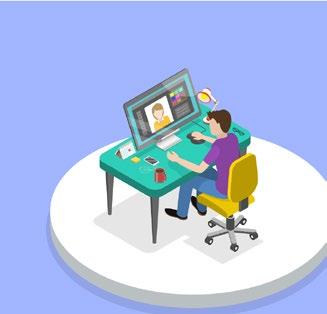
The Role of Hybrid Virtual Learning



As employees split their time between homes, remote offices, and central offices, organizations must decide on the types of activity that should take place in each location. And chances are learning will largely occur at home offices or with audiences in “mixed environments” – The only way to ensure everyone’s participation as peer learners is to harness virtual learning (both live virtual and self-paced).
Anyone who has ever delivered content to a part inperson, part virtual audience knows that learners need to interact as peers in collaboration and problem-solving, which would be vastly different if only some of the audience members are virtual.
STATE OF THE INDUSTRY RESEARCH 34 ARTICLE
Considerations for Your Hybrid Virtual Learning Strategy

1. Redefining Virtual Learning. For decades, virtual learning had not been as valued as the more traditional approaches. Important content, it was thought, would not be taught online. Now, in the hybrid work environment, virtual learning has become a critical component of learning strategies. Therefore, organizations must embrace, not dread, these experiences.
2. Understanding what a “hybrid” audience really looks like in your organization. Hybrid virtual learning is perhaps the most challenging learning approach. We need to not only intellectually engage individual learners but also anticipate and accommodate various scenarios! You’ve seen it: Three people are logged in independently, another five are sitting together in a room and watching your session projected onto a big screen, and two people are sitting in the same room as you because they wanted a face-to face experience, not to mention the several listening in on their mobile phones while traveling. As organizations continue to define the composition of their workforce, purposeful and thoughtful planning will be key to the creation and delivery of successful hybrid programs.
3. Putting together a strong delivery team that understands the nuances of a hybrid environment. To ensure that everyone is engaged and actively learning, you need a strong team. The facilitator is responsible for managing discussions, content, and intellectual engagement. The producer/host is in charge of technology, ensuring each learner’s voice is heard regardless of their
mode of participation and anticipating the facilitator’s needs.
4. Developing a design that meets the needs of a hybrid audience. Today’s hybrid learning environment is complicated. We aren’t just designing for a particular virtual classroom technology; we need to contemplate where people are, what device they are using, when they learn, etc. and align the program design with the learner intent. To maintain the attention of the learners, intentional instructional design is more important than ever.
5. Ensuring equivalent learning experiences. An individual may choose to participate in virtual learning in many ways: on or off camera; in a private or shared space; at home or in a more traditional office setting; as an individual or in a group; online or in person, etc. And all of these combinations may occur IN THE SAME SESSION. The facilitation team, the program design, and the corporate culture must be aligned so that no learners are left behind.
6. Fostering an inclusive environment that imparts a sense of belonging. A sense of belonging is crucial for students from diverse backgrounds to feel valued and heard, ultimately leading to better learning outcomes. Organizations must prioritize cultivating an inclusive learning environment by actively addressing and challenging biases, providing culturally responsive teaching strategies, and encouraging open communication. By embracing these key principles, the hybrid learning experience can become a foundation for empowering all learners and fostering a truly inclusive learning community.
STATE OF THE INDUSTRY RESEARCH 35 ARTICLE
1. Establishing the value of hybrid virtual learning as part of the overall learning strategy. Organizations should recognize and communicate the immense value of incorporating hybrid virtual learning as a core component of their overall strategy. Hybrid learning offers the flexibility and adaptability that modern employees need, resulting in improved knowledge retention, increased productivity, and enhanced employee wellbeing.
In today’s rapidly evolving business landscape, organizations must stay ahead of the curve to remain competitive. Integrating hybrid virtual learning into your strategic plan ensures that your workforce is equipped with the skills and knowledge needed to navigate change and drive innovation. By investing in this novel approach, your organization will be well-positioned to thrive and succeed in an increasingly interconnected and dynamic global market.
For 23 years, InSync Training has been a virtual organization supporting hybrid learning events. Hybrid virtual learning can be an environment that allows employees to thrive and helps businesses to meet their goals. Ready to learn more about how to foster virtual learning in your hybrid workplace? Contact us at Http://www.insynctraining.com

 Jennifer Hofmann is the Founder & President of InSync Training
Jennifer Hofmann is the Founder & President of InSync Training
Would you like to comment?

STATE OF THE INDUSTRY RESEARCH 36 ARTICLE
OPTIMIZE YOUR VIRTUAL LEARNING STRATEGY
Are you ready to unlock your organization’s potential? InSync Training delivers state-of-the-art virtual learning solutions designed to elevate your virtual and hybrid learning strategies.
With over two decades of expertise in virtual classrooms, InSync is dedicated to connecting people and content through technology, driving real business results globally. Regardless of industry, time zone, platform, language, or culture, InSync stands as your go-to partner for comprehensive virtual training solutions.
Fueled by our passion for learner engagement, InSync Training is at the forefront of innovation in the virtual training space. Our team of experts and research-based methodologies enable organizations to achieve unparalleled success through immersive and impactful virtual training experiences.
Experience exceptional virtual learning with our allinclusive solutions, featuring custom design, expert facilitators, and exceptional hosting support. Bolster your team’s capabilities with industry-recognized certifications. Trusted by Fortune 50, 100, and 500 clients, we’ve certified over 25,000 L&D professionals in our best-in-class approach.



Visit insynctraining.com to schedule your complimentary consultation and unleash your organization’s potential today.
VIRTUAL LEARNING. REAL SUCCESS.

Call us: 1-860-598-0888
LEARN MORE
One Unified Platform for Better Team Engagement
Bridge is a learning and performance platform that can enhance employee performance, increase engagement, and align your people with your organizational goals.
Learn
Onboard new hires, meet compliance, roll out leadership programs, and train customers in an easy and scalable way.

Build Skills
Our industry-leading AI matches job titles with skills, and assigns courses to help employees grow professionally.
Perform
Run performance review cycles, track goals, conduct talent reviews, and give managers 1on1 agendas to monitor tasks and celebrate wins.
Amazing Customer Support
In-house customer support team that works 24/7/365.
Measure
Track course completion rates, skills gaps, goal completion, and more.
FIND OUT MORE getbridge.com
Taming the AI Beast: How Artificial Intelligence Can Optimize L&D
By Jeff Fissel, Bridge
There’s a reason recent developments in the world of AI have been met with such a mix of excitement and apprehension: commentators recognize that, whatever else it may be, artificial intelligence is vast — in every sense of the word.
The datasets used to train generative AIs like ChatGPT are enormous; the scope and volume of their output can be formidable; and the implications of AI’s impact in industries like learning and development are potentially immeasurable.
Such is the enormity of AI’s ongoing growth that it can start to feel like a huge, wild, and unpredictable animal — and it is tempting to assume that, like the proverbial 800-pound gorilla, it sits where it wants! But while the growth of the AI beast may feel unstoppable, L&D professionals can do more than simply wait and see where it sits. In fact, they have the means to tame it.
Harnessing the power of AI takes a firm grasp of its applications in the learning space. Whether it is the efficiency of administrative automation, the sophistication of personalized learning content, or the motivational effects of learning recommendations, you will not realize the benefits
of any AI-related optimizations unless you know what to look for in the latest AI-powered tools and solutions. So: what does an AI learning tool look like?
What Qualifies a Solution as ‘AI’?
If you want to tame AI for L&D purposes, you have to recognize the solutions that make AI work for you. This is a great initial step for two reasons. Firstly, it will allow you to focus on practical features that can augment your learning efforts. Secondly, you will find yourself able to separate the potentially intimidating concept of AI in the abstract from the specific qualities that govern your day-to-day experiences with this technology.
There is no standardized definition for AI platforms, so let us follow the example of an article from MIT, which defines AI as “the capability of a machine to imitate intelligent human behavior”, and goes on to note that “artificial intelligence systems are used to perform complex tasks in a way that is similar to how humans solve problems.”
So, what complex tasks can learning professionals expect an AI platform to perform?

STATE OF THE INDUSTRY RESEARCH 39 ARTICLE
While this list is not exhaustive, it would not be unreasonable to shop around for AI-powered learning platforms capable of one or more of the following:
● Learning from employee data via machine learning algorithms
● Automatically completing administrative tasks
● Anticipating learning requirements and offering recommendations accordingly

● Adapting to feedback and performance data
These characteristics offer a taste of the convenience and sophistication that AI can add to your L&D programs — but even these concepts can feel a little pie in the sky if they are not

accompanied by solid use cases to back them up. Let us take a look at some day-to-day examples of an AI-infused learning platform in action.
3 Ways You Can Apply AI to Your L&D Processes
Applying AI to your learning-related processes can take several forms. To illustrate the practical uses for AI in this space, McKinsey’s succinct summary of applied AI comes to mind: “By using artificial intelligence, companies have the potential to make business more efficient.”
For L&D teams, AI-powered efficiency increases will be felt most keenly in the realms of administration, personalization, and content generation. Let us take a look at each of these in turn.
STATE OF THE INDUSTRY RESEARCH 40 ARTICLE
1) Reduce the Administrative Burden of Course Tagging
Your LMS might be the most pedagogically impressive bastion of knowledge imaginable — but that is not worth much if your learners cannot find the right courses (or cannot recognize how course content relates to their skill development needs). That is why your courses need to be tagged with the skills they teach. The only snag? This can be an arduous process for administrators who undoubtedly have better things to do.
With a little AI intervention, however, it is possible to automate the skills tagging process. An AI-powered platform like Bridge can assess your courses, work out which skills they entail, tag your courses with those skills, and build skills communities of like-minded learners — transforming the process from an administrative slog to a walk in the park.
2) Personalize the Learning Journey with AI Recommendations
We all know that learning functions best as a journey — not as a sporadic engagement with ad hoc courses. An AI platform can bring this ethos to life by automatically recommending training courses based on data like existing employee skills, current skill requirements for your organization’s job roles and industry, and individual employee aspirations.
AI learning recommendations are an efficient way to supply the right learning to the right people, and it is now well-established that personalizing learning around learner interests has a positive impact on achievement.
3) Speed Up Learning Content Creation with Generative AI
While these AI-powered recommendations are a familiar technology, the generative AI capabilities underpinning tools like ChatGPT have opened the floodgates to an exciting new realm of possibilities for L&D practitioners.
Plenty of commentators have noted that generative AI’s use cases include the creation of written content in fields like marketing, law, HR, and so on — and the same is true of L&D.
Tools like ChatGPT can be used to:
● Conjure up modular structures for your learning courses

● Generate assessments
● Catalyze the process of populating your authoring tool with top-notch learning content.
STATE OF THE INDUSTRY RESEARCH 41 ARTICLE
The Promise and Limitations of AI in L&D
It is easy to get excited about the possibilities AI represents in the learning space, and with good reason. After all, efficiency is just one of several advantages that AI brings to the L&D table. Autotagging is not just fast — it can also offer more consistent and comprehensive results than manual skills tagging. Learning recommendations are not just convenient — they are a great way to motivate learners who know your platform has a data-driven rationale that places their career growth at the heart of its calculations.
Although these L&D enhancements are fantastic, taming the AI beast involves recognizing when you should not unleash it (or, at least, where you should exercise a little caution). Generating content with a tool like ChatGPT, for example, requires careful oversight by qualified instructional designers and subject matter experts. We have all encountered stories of generative AI tools producing inaccurate information, and that risk is especially acute in the world of L&D, where sharing correct material is essential.
A Final Word: Why AI Should Help Us Optimize L&D
In the world of AI, it is important to retain an evergreen mindset. AI capabilities are constantly evolving, and today’s strengths and weaknesses are tomorrow’s old news. That is why, whatever traits the AI beast develops, our ongoing efforts to tame it should primarily take the form of optimization. It is a sensible middle ground, allowing L&D professionals to refine learning practices and continuously assess the possible uses of AI while remaining mindful of the shifting sands of the sector.
Putting optimization first ensures that we are not simply turning over every aspect of L&D to a technology that is still unfolding — we are using AI tools to sharpen up the workflows, administration, and learning infrastructures supporting the thorough human strategies that make learning work.
If you’d like to discover how Bridge can leverage AI to bolster your L&D initiatives, contact us at info@ getbridge.com.

Jeff Fissel is the VP of Learning Solutions at Learning Technologies Group. Jeff has spent his career in the video learning space. He led the integration of what was KZO Innovations' video technology (an organization he was a co-founder of) into the Instilled LXP which combined forces with Bridge to build a market-leading learning and development platform. Jeff has served as an adviser on video to some of the world's top companies and often shares his thought leadership at conferences, web events, and publications with the industry's top outlets. Jeff is currently helping drive product and sales alignment between LTG product and services businesses. He loves talking and learning so please reach out anytime.
Would you like to comment?

STATE OF THE INDUSTRY RESEARCH 42 ARTICLE

The Future of Learning Technologies 2023 Employee Learning & Development Excellence • July 2023 For more information: 1.877.472.6648 sales@hr.com www.HR.com/epubs The HR Research Institute tracks human resources trends and best practices. Learn more at hr.com/featuredresearch
Best-in-Class Education For All Your Learning And Training Needs
HR.com prepares HR leaders to be strategic business leaders by curating and delivering best-in-class products and services so you don’t have to waste time seeking out content on your own. We leverage technology and experience to provide you with customized solutions to best meet your professional development needs at every stage of your career.
From on-demand to cohort-based offerings, below is a listing of virtual courses that will challenge and empower you by giving you the tools to drive innovation and success in your organization.
Leading Agile e-Learning Development Certificate Course
Transform your e-Learning programs through an Agile approach Prepare for a mindset-shift, the practice, and the tools to transition your team to iterative ways of working that will improve the performance impact of your e-Learning designs using Successive Approximation Model (SAM).
Effective Learning Strategies Certificate Course
Use the power of learning science and cognitive behavior, ground your practice in evidence-based approaches, avoiding myths and hype. Create uniquely valuable learning experiences by exploring cognitive science and implications for organizational learning.
L&D's Playbook for the Digital Age
Learn to formulate a short- and long-term learning strategy based on evolving business needs in the digital age. Based on award-winning learning designer Brandon Carson's forthcoming book "L&D's Playbook for the Digital Age, this workshop focuses on providing a development program targeted to both current learning leaders and those aspiring to take on the role of leading a corporate learning organization. The workshop also provides an opportunity for participants to grow their professional network by connecting to like-minded learning professionals to learn and share as well as advance personal growth.
Webcast Like a Boss
Tips, tricks, strategies, and best practices improve your Webcast presentation skills. Our team of experts has gathered the most valuable and effective practices and methods to ensure you will be able to garner audience attention, tell your story, and give killer virtual presentations!
Lean Six Sigma Basics
The Lean Six Sigma Basics course teaches strategies, techniques, and concepts practitioners will need to complete process improvement projects.
Introduction to Agile E-Learning Development
This virtual self-paced course explores the methodologies and practices of Agile development and explains the key principles that form the foundation of Agile Project Management.
The Technology of Online Learning
Learn Best Practices Using Technology for Creating Online Learning. This course covers the key software and hardware options available, and it covers best practices in using technology.
Introduction to Online Learning
Learn Basic Techniques to Create and Deliver Online Learning. This course introduces the major models, tools, and techniques for creating and delivering online learning.
Gain access to more expert-led courses.
At HR.com, we are committed to educating and inspiring HR professionals and helping them build meaningful and impactful careers. With products and resources rooted in education, research, and leveraging cutting-edge technology, we help at every career stage - and over 1.92 million HR pros agree! (How could that many people be wrong?) By delivering best-in-class learning products, 250+ annual webcasts and 30+ world-class events, and innovative and thought-provoking research through the HR Research Institute, HR.com strives to inspire and strengthen workforces to change the world. HR.com also offers the most comprehensive HR certification exam preparation and guarantees a passing score on all SHRM and HRCI certification exams. Technology and experience drive our customized solutions that will help you become the best and most successful version of yourself.
Employee Learning & Development Excellence presented by HR.com JULY 2023 44
The Benefits Of Emphasizing Social Learning In A Remote World
3 steps to boost employee engagement with social learning in a remote-first work environment
By Geri Morgan, Intellum
Whileremote work continues to remain a top priority for both employers and employees, many struggle with the lack of in-person interaction and collaboration that was the hallmark of in-office engagement.
Research shows that social connectedness is essential to employee well-being and overall workplace happiness. And despite numerous articles touting the benefits of remote work, there is very little out there on how companies can build programs to address a growing relational gap.
One way leading brands are connecting employees despite the distance is through social and collaborative learning initiatives.
How Social Learning Works at Work
When we think about learning at work, we often think of structured activities like employee onboarding or perhaps a certification we earn for a product or a role. But we often underestimate just how much is learned on the job through conversations.
In an office environment, we have conversations at the water cooler that provide needed insight into the inner workings of the organization. We have exchanges before and after a meeting that offer context and color to the topic at hand. We have desk drop-bys to ask clarifying questions about projects and processes. We miss a lot of that in the remote world — but that
does not mean we have to miss the opportunity for this kind of learning entirely.
The following are three steps you can take to bring social learning to your workplace.
1. Create a Connected Culture of Learning
When employees meet and work in-person, connection tends to happen naturally. As companies were thrust into a remote or hybrid environment in the past couple of years, many lacked the tools and practices needed to intentionally create the community and culture that was more naturally cultivated in the office environment. In a remote-first world, connection takes intentionality.
Top Pick Submit Your Articles Employee Learning & Development Excellence presented by HR.com JULY 2023 45
HR teams can lead the way by incorporating social elements into learning and development initiatives. For example, reading books together that support the business strategy and hosting discussions to talk about applying the principles to the business. For newer employees, this might look like an onboarding cohort or a new hire “buddy system,” bringing in multiple individuals together to go through onboarding materials or instructor-led training in a group setting.
Part of learning is bouncing ideas around and putting them into context, asking questions for clarification and deepening your understanding. A forwardthinking remote business model that empowers employees to collaborate and learn from each other can create new opportunities to reach key business objectives.
2. Develop a Learning Culture
Glint data shows that people chose “opportunities to learn and grow” as the No. 1 driver of positive work culture. As
people leaders, professional development for employees has to be top of mind. We also must consider how employees learn best — and support them by providing opportunities to bounce ideas around, ask questions, and put concepts into context.
This could take the form of internal Lunch & Learns talking about a subject that pertains to the business. It could also look like providing resources and funding to learn something new — then bring those insights back to the company. At Intellum, we offer employees $3,500 a year to pursue professional development. Their growth contributes to both their career success and our company’s success.
3. Leverage Technology to Facilitate Connection
As every industry continues investing in remote work options, they must explore the necessary tools that optimize education, support, and connection for employees. Many have adopted collaboration and communication platforms, like Google Suite and Slack. But how can we look at the


rest of our tech stack through the lens of connecting employees?
For HR teams, a great place to start is with the learning management system (LMS). These are typically set up to deliver training content, whether for onboarding, compliance, or professional development. Learning and development professionals should consider how they can facilitate employee interaction within their LMS, which could take the form of a discussion board or gamified experience using elements like leaderboards or credentials. Successful companies will focus their efforts on how to engage individuals with new information and training — not simply provide it.
What many companies have not realized is that social learning can happen both in-person and virtually – as long as you have the right technology and practices in place. By creating opportunities for social learning via technology, companies will meet employee needs no matter where they are located, while instilling a culture that promotes learning.
The Benefits Of Emphasizing Social Learning In A Remote World
Submit Your Articles Employee Learning & Development Excellence presented by HR.com JULY 2023 46
Geri Morgan is Chief People Officer at Intellum Would
you like to comment?

ePublication EditorialCalendar2023 CheckoutthenewandupcomingthemedHR topicsinEmployeeLearning&Development Excellence. Check ePublications Editorial Calendar Here. Would you like to submit an article? | Write to us at ePubEditors@hr.com Submission Guidelines 1 The Future of Learning Technologies July 2023 2 Employee Reskilling and Career Development Aug 2023 3 Learning Data Ecosystem / Learning Culture Sept 2023 4 Soft Skills and Hard Skills Oct 2023 5 HR Skills and Education Nov 2023 6 Employee Training Program for Future Dec 2023
Overcoming The Talent Shortage With Learning And Development
Prioritizing employee learning and development
 By Laura Baldwin, Vantage Circle
By Laura Baldwin, Vantage Circle
Itis no secret that the pipeline of new talent is shrinking, despite a rash of recent layoffs and a tentative economy. College enrollments have also continued to decline since the onset of the COVID-19 pandemic, further contributing to the growing
shortage of skilled workers, which a Korn Ferry study estimates will leave 85 million jobs unfilled around the world by 2030. In the current climate, companies can’t assume that they’ll be able to address their needs through hiring alone.
Submit Your Articles Employee Learning & Development Excellence presented by HR.com JULY 2023 48
More than ever, companies need their employees to reskill and upskill on the job to tackle challenges and leverage new tools and technologies. But the responsibility for acquiring new skills shouldn’t be placed solely on the shoulders of employees, as is typical with many traditional training models. The onus is on the company itself to make training more available and more effective. Rather than falling back on conventional, outdated methods, business and HR leaders need to rethink their talent strategies and retool their learning programs from the ground up, both to benefit employees professionally and to ensure that the new skills they acquire fit the needs of the company. Here are three ways to go about it.
1) Upskill and Reskill in Line with Business Goals
Most learning and development (L&D) programs focus on building skills, but not all of them directly target the immediate needs of the company. L&D teams should work more closely with business leaders to identify areas that need improvement (sales techniques or technical skills, for instance), then tailor learning programs to address them.

The value of doing so goes far beyond simply improving sales or plugging a skills gap. When employees understand how their training applies to real-world issues and can see the results, their satisfaction improves along with their skills. And that can help the company retain its top talent.
2) Use New Tech to Help Employees with Varying Levels of Expertise
Just about everyone in your organization will need training and upskilling at some point, but their reasons and goals will depend on their individual situations. Longtime employees may not be as familiar with the latest tech as newer employees fresh out of college and need to learn a more modern tech stack. Some new hires might not have conventional degrees at all— perhaps they completed a series of boot camps and earned certifications instead—and could use training to get up to speed on much-needed “soft” skills, like communication or the latest management approaches.
The Talent
With Learning And Development
Overcoming
Shortage
Submit Your Articles Employee Learning & Development Excellence presented by HR.com JULY 2023 49
Overcoming The Talent Shortage With Learning And Development
Using technology to deliver training in a variety of modalities can help ensure that employees with varying levels of expertise can all get the training they need at the pace that works best for them. In addition to hands-on training, an L&D platform should include live online courses, interactive learning, books, videos, and other media formats that are searchable and able to meet the specific needs of the employee. For example, a new employee might need to learn the content of an entire ebook from start to finish to understand Python or Kubernetes, while a more experienced team member may only need a refresher to resolve an issue they’re currently working on—what we at O’Reilly call “learning in the flow of work.”
The right learning platform can also create avenues for peer-to-peer collaboration that helps employees build essential soft skills, especially in an environment where remote work has become more common.
3) Focus on Advancing Employees’ Careers
A strong talent strategy will help employees quickly acquire the skills they need to further their careers while also advancing the goals of the organization. So give them access to a flexible learning platform or set of tools that can address their immediate and long-term goals—ideally one that also provides one-on-one collaboration, the ability to attend virtual industry conferences (without taking significant time off or traveling), and the opportunity to earn professional certificates.
Empowering skilled employees to better perform their tasks and accomplish their goals doesn’t just enable them to better prepare for their careers over the long haul; it can also entice them to stick around. Companies with a strong L&D culture are more attractive to job seekers as well, as those prospects can see how the company will help them advance their careers. So you can retain the talent you have by improving their skills now, plus attract fresh talent over time.
Take Ownership of L&D for Long-term Success
Investing in training and improving employee skills is a great way to support your company’s overall growth and success. Companies that prioritize building a learning culture as part of their overall corporate identity will be best positioned to survive talent shortages, and even thrive despite economic headwinds.
But companies must remake their L&D programs in ways that clearly benefit both the employees and the company. Upskilling and reskilling approaches have to align with business success and corporate values. Making use of new technologies can help meet the unique needs of both existing teams and incoming employees, including those that may not hold traditional college degrees.
Implementing a strategy that places the primary responsibility for learning and development on the company itself, rather than on its employees, is an important step in establishing a learning culture that improves the careers of employees—while also setting the company up for both short-term gains and long-term success.
Laura Baldwin is the President of O’Reilly Media. Laura began working with O’Reilly in October 2001 as chief financial officer and added chief operating officer to her responsibilities in October 2004 before becoming the company’s first president in March 2011. She’s spent the years since focused on building and leading O’Reilly’s businesses worldwide. Prior to O’Reilly, she was a consultant to the publishing industry and managed several large consulting engagements across all genres of publishing and media.
Would you like to comment?

Submit Your Articles Employee Learning & Development Excellence presented by HR.com JULY 2023 50
Learning And Employee Engagement, The Perfect Relationship?
Tailored learning experiences foster autonomy, meet individual needs and drive career growth
By Jen Collins, Learn In
Employee engagement is on the rocks. Less than a third of American employees feel engaged at work, which spells trouble for overall productivity, retention, recruiting costs, culture, and employer brands.
It was not always like this. In fact, until this year, engagement was on the rise. But a combination of a lack of clarity around role expectations, fewer opportunities for development, and a feeling of not being able to voice opinions
at work have led to the current decrease.
Therein lies the solution for HR teams — partnering with L&D can provide the influence, development, and clarity that today’s employees are seeking.
Learning Is Vital Across the Employee Lifecycle
Learning feeds into so many parts of the employee experience; from the moment they onboard with all of the critical company and role knowledge imparted during this process, to the key learning junctures at promotion, company and role changes, and outskilling. Offering the right learning opportunities to all employees ensures they not only gain role clarity, but the skills needed to succeed and grow in their roles too. Plus, investing in someone’s long-term skills and career journey is a tangible way to show care.
Submit Your Articles Employee Learning & Development Excellence presented by HR.com JULY 2023 51 Top Pick
Boosting Autonomy via Personalized Learning
We are quid pro quo creatures. Therefore, offering learning as an individual way for someone to grow their skills, and ultimately their career prospects, can lead them to remain with your organization for longer thanks to the opportunities they are getting. If those learning opportunities align with their interests and personal goals, you also boost their overall sense of autonomy at work.
The personalized aspect of that is vital. Some of us have unfortunately experienced what it is like to sit through an irrelevant webinar or live training session. When learning is not linked to our needs in our current roles, or where we want to develop, it becomes disengaging and, in the worst case, demoralizing.
A powerful way to ensure people are learning the skills they desire is to give everyone a personalized learning budget that they can spend on courses and resources of their choosing. It does not have to be without guidelines or
boundaries. You can recommend learning content providers that your organization already has a relationship with. Or you can have a shortlist of skills that are ‘company critical’ and that will have a huge impact on someone’s career trajectory within your organization if they upskill in them.

Personalizing learning in this way gives people a clear answer to “What’s In It For Me?” (WIIFM). We do not tend to do anything without a positive answer to this question, especially if it involves a lifelong commitment.
Take SaaS employee background company Checkr, for example. As Linda Shaffer, Chief People & Operations Officer at Checkr explains, “Something we did differently this year is adopting a platform for employees to go and discover training without having to pay out-of-pocket. By taking away that friction for employees, participation in employee-driven development has skyrocketed to a 50 percent employee participation rate.”
Meeting People Where They’re at
Of course, people go through different seasons in their lives where learning can come to the forefront or take more of a backseat. Meeting people where they are currently at in their lives will create a more consistent learning habit throughout their lifetime. There are key moments when they will feel more engaged with learning.
A recently promoted manager, for example, might seek out learning opportunities aligned with management and leadership tactics. A new graduate may need resources around building a healthy work/life balance and establishing a strong professional network. Consider the learning needs of people at different levels and life stages, because this will impact the kinds of skills they learn, the type of resources they need, and how much time they will likely dedicate to learning.
An Active Process
The way this learning strategy is implemented is constantly refined over time. It is an active process that is tweaked based on engagement, learning, and performance data plus feedback from employees and managers. You do not build a strong learning culture (or company culture, for that matter) by investing in a learning tool, installing it, and then leaving it to run. The story and strategies you build around your learning investment matter as much as the technology and resources you invest in.
Learning And Employee Engagement, The Perfect Relationship?
Submit Your Articles Employee Learning & Development Excellence presented by HR.com JULY 2023 52
Aligning with the Business
For learning to impact the employee experience, more than L&D needs to be bought in and involved in your learning strategy. HR is an obvious partner, but lines of business also play a vital role in influencing the skills (and, therefore, resources) you want to build. Close alignment with colleagues in other departments ensures that learning is core to everyone’s role, that time is set aside for employees to learn, and that it really has an impact on the business.
Learning’s Greatest Asset
Managers deserve their own mention here. As they are the bridge between the company, team, and individual goals, managers are the key group you have to recruit as learning champions. It is only through them that you will get any kind of consistent learning practice in your workforce.
They hold the key to accountability, time, and direction for their team members. Indeed, Degreed’s How the Workforce Learns report found that employees in strong learning cultures are 270% more likely to have a manager who supports their development. Those in poor learning cultures were 92% more likely to feel that their manager has not meaningfully supported their development over the past year.
The final key to coupling learning with employee engagement is
providing a consolidated (AKA coherent) learning experience. Giving individuals a personalized learning experience naturally means there will be a lot of resources available, both free and paid for. But that does not mean your learning experience needs to become something fragmented and hard-to-navigate.
Putting everything in one place achieves several things.
1. It ‘trains’ people to go to one place to access all of their learning. From their everyday learning opportunities via content to deep learning engagements in an academy.
2. An intuitive and engaging interface (perhaps with some gamification elements) boosts the likelihood of someone actively choosing to learn.
3. It consolidates learning and skills data, which can then be used to influence future learning investments, talent management, workforce planning, and more.
Or as Peter Manniche Riber, Head of Digital Learning at Novo Nordisk puts it, “Call it an LXP, HR Tech, Ecosystem connector… whatever you want. We needed a global solution, with an interface that people would actually find appealing to use and a machine focusing on connecting experiences and resources from both internal and external sources.”
Bringing This to Life in Your Organization
If I could summarize this learning approach in a single word, it would be “intention”. Getting your learning culture and technology to a place where it can actively contribute to your employee engagement takes thought-out and carefully considered actions. This includes thinking of what a personalized learning offering looks like for your unique workforce, the tools and resources you need to enable this, and the communication you put around it to get everyone excited and motivated to learn every day.
Jen Collins is Senior Director Client Experience - Academies - at Learn

In. Jen is a learning strategist, consultant, speaker and facilitator with a passion for talent development, in particular, skill-specific learning programs and academies. She has consulted and facilitated learning experiences on a variety of topics for all levels of employees across B2B and B2C businesses, drawing on her combined experience in L&D and marketing to understand learner motivations and drive engagement. Jen has 20 years of marketing and business management experience, with a focus on talent development for the past five years.
Would you like to comment?
Learning And Employee Engagement, The Perfect Relationship?
Submit Your Articles Employee Learning & Development Excellence presented by HR.com JULY 2023 53
HRCI® & SHRM® CERTIFICATION PREP COURSES
GROUP RATES AVAILABLE
For HR Professionals
Show that management values the importance of the HR function, and has a commitment to development and improvement of HR staff.
Ensure that each person in your HR department has a standard and consistent understanding of policies, procedures, and regulations.
Place your HR team in a certification program as a rewarding team building achievement.
For Your Organization
Certified HR professionals help companies avoid risk by understanding compliance, laws, and regulations to properly manage your workforce.
HR Professionals lead employee engagement and development programs saving the company money through lower turnover and greater productivity and engagement.
A skilled HR professional can track important KPIs for the organization to make a major impact on strategic decisions and objectives, including: succession planning, staffing, and forecasting.
HR.com/prepcourse CALL TODAY TO FIND OUT MORE 1.877.472.6648 ext. 3 | sales@hr.com
1 Less expensive than a masters or PhD program, and very manageable to prepare with
2. legislation and best practices
3. Recognized, Industry benchmark, held by 500,000+ HR Professionals
Group Rate Options
We offer group rates for teams of 5+ or more for our regularly scheduled PHR/SPHR/ SHRM or aPHR courses.
For groups of 12+, we can design a more customized experience that meets your overall length of the course.
Groups rates for HRCI exams are also available as an add-on.
All group purchases come with 1 year of HR Prime membership for each attendee to gain the tools and updates needed to stay informed and compliant

CALL TODAY TO FIND OUT MORE 1.877.472.6648 ext. 3 | sales@hr.com | HR.com/prepcourse
1 2 3
Effective Learning And Development Programs For 2023
Navigating challenges, priorities and opportunities
By Russell Kendrick, ILX Group
Itis widely known that organizations are facing many challenges this year, including increasing costs, supply chain disruption, lack of consumer spending, and a decline in growth globally. It is, therefore, no surprise that our research found that the cost-of-living crisis and other related issues, such as rising inflation, is the biggest issue facing 76% of organizations this year
But this is not the only challenge organizations are tackling this year. We found that filling skills gaps (66%), finding new talent (66%), retaining talent (65%) and keeping up with technology developments (64%) are all top challenges.
Top
Submit Your Articles Employee Learning & Development Excellence presented by HR.com JULY 2023 56
Pick
However, businesses have an opportunity to innovate, grow and transform through L&D programs that equip employees with skills and knowledge which can empower them to:
● Adapt to change with agility and speed
● Automate, optimize and streamline working practices and processes
● Innovate products and services to meet evolving customer needs
● Maximize efficiency through effective project management
While it may seem a good way to make cost savings, reducing L&D budgets will have a detrimental impact. As per the research, 50% of organizations said their training programs are not effective due to budget constraints. But by investing in L&D, organizations can upskill, reskill, and cross-skill existing employees.
The Most In-demand Skills in 2023
Given the above, it is understandable that a primary priority for 44% of organizations is increasing efficiencies, improving productivity, and reducing
costs. Investing in skill development is one way to achieve this.
In 2023, these are the top skill areas that business, HR and L&D leaders said they are investing their L&D budgets in:
1. Management and leadership (67%)
2. Digital marketing (66%)
3. Artificial intelligence / sustainable development / big data and analytics (64%)
4. IT/enterprise service management (ITSM/ESM) / cyber (62%)
5. Cloud (61%)
When compared to our findings last year, management and leadership remain the most in-demand skill, likely because most organizations are still facing the same challenges, soaring inflation, supply chain disruptions, labor shortages, etc. Businesses need leaders that can make strategic decisions, provide guidance, set goals and action plans, and continually motivate their teams.
Effective Learning And Development Programs For 2023
Submit Your Articles Employee Learning & Development Excellence presented by HR.com JULY 2023 57
While there was not a change in the top spot, some interesting shifts have happened further down the list. Notably, demand for digital marketing and sustainable development has increased significantly, with the former climbing from ninth place in 2022 to second, and the latter up from tenth
But it is clear that digital skills remain a top investment area, suggesting organizations are continuing to carry out digital transformation and embracing new technology to help them to:
● Differentiate themselves from the competition and attract new customers with better digital marketing
● Improve organizational effectiveness and performance using AI, data, cloud and ITSM/ ESM
● Reduce environmental impact and meet sustainability initiatives/goals
What Is Driving the Demand for L&D This Year?
This trend is also evidenced by our research, which discovered that digital transformation is the top driver for L&D within 39% of organizations this year. Businesses are under immense pressure to keep pace with technological advancements, as more organizations undergo digital transformation, employees need the right skills and training to successfully make these changes. It is also important that investments are made to futureproof employee skillsets, allowing them to take on more digital-based roles and responsibilities moving forward.
As well as supporting digital transformation initiatives, 39% of organizations said they felt under pressure to support employees with remote/hybrid working this year. However, interestingly the adoption of new ways of working, which was the number one driving factor for L&D last year, has dropped to sixth place in 2023. This demonstrates that most businesses have been able to adjust their processes and working practices to meet changes that occurred over the last couple of years, and are now successfully driving their business forward.
How Will L&D Enable Organizations in 2023?
With most organizations focusing their L&D strategies on a combined approach of filling skills gaps and gaining accreditations, it is clear that improving workforce efficiency and effectiveness is a requirement this year. Blending the need for skills training and accreditation allows an organization to tailor its L&D program to individual needs, as for some roles accreditation may be needed to prove an employee’s ability and meet compliance purposes, but for others, building knowledge and driving improvements in performance is the priority. Also, this flexibility supports employee career development and helps organizations maximize budgets.
Whether you are more focused on filling skills gaps or gaining accreditation, our research has shown the value and benefits of investing in development programs for both organizations and employees. As it helps teams learn new skills or enhance existing ones, expand their capabilities, improve collaboration across functions, and increase productivity. In fact, upskilling was found to be the top in-demand activity within 42% of organizations this year.
In addition, our research found, 38% of organizations recognize the advantages of focusing on career development programs, and the impact this can have on employee satisfaction and loyalty. So, by investing in training programs and career development it can not only help to retain talent but also attract new employees.
If you’re interested in finding out more, including how demand for skills differs across functions, you can find the full research report entitled ‘L&D in 2023: Challenges, Priorities and Opportunities’ here.
Russell Kendrick is Managing Director at ILX Group
Would you like to comment?

Effective Learning And Development Programs For 2023
Submit Your Articles Employee Learning & Development Excellence presented by HR.com JULY 2023 58
VIRTUAL EVENTS & HR.COM WEBCASTS UPCOMING www.hr.com/upcoming_webcasts www.hr.com/virtualconferences View our Upcoming Webcasts Schedule and Register Today! View our Upcoming Virtual Conference Schedule and Register Today! 5 Reasons Why Skills Should Be Critically Connected to Your Performance Strategy July 12, 2023 11:00 AM - 12:00 PM ET REGISTER Support Employees through Financial Wellness and Benefit Options July 11, 2023 11:00 AM - 12:00 PM ET REGISTER The Real Cost of Payroll Errors and How to Avoid Them July 20, 2023 3:00 PM - 4:00 PM ET REGISTER How Skills-Based Hiring Can Close the Talent Gap July 18, 2023 12:00 PM - 1:00 PM ET REGISTER WEBCASTS The State of Human Experience in the Workplace August 16, 2023 Navigating Pay Equity, Pay Transparency, and Pay Range Disclosure Regulations July 19, 2023 11:00 AM - 12:00 PM ET WEBCASTS VIRTUAL EVENTS The Future of Performance Management July 12-13, 2023 REGISTER The State of Pay Equity July 19, 2023 REGISTER REGISTER REGISTER
Thank you for partnering with us!
THANK YOU
Circa provides OFCCP compliance management and recruiting technology solutions to deliver qualified candidates on a level, equitable playing field for organizations.

LEARN MORE
Designing better ways to work by providing cutting-edge products and exceptional experiences within HR, Talent, Time Management, Benefits and Payroll.
LEARN MORE

ADVERTISE WITH US













Like to submit an article? Use our online submission form or for more information go to www.hr.com/ExcellencePublications Publications 13 Targeted Publications to Reach Your Audience Informing, Educating, Enlightening and Assisting HR professionals in their personal and professional development, the Excellence series offers high-quality content through the publications!

For more information: Phone: 1.877.472.6648 | Email: ePubeditors@hr.com | www.HR.com/epubs Employee Learning & Development Excellence July 2023










 - Geri Morgan, Chief People Officer, Intellum
- Geri Morgan, Chief People Officer, Intellum



















 Dave Ulrich
Rensis Likert Professor, Ross School of Business, University of Michigan Partner, The RBL Group
Julie Winkle Giulioni
Author, Virtual /Live Keynote Presenter, Inc.’s Top 100 Leadership Speakers
Dr. Beverly Kaye CEO, BevKaye&Co.
Dave Ulrich
Rensis Likert Professor, Ross School of Business, University of Michigan Partner, The RBL Group
Julie Winkle Giulioni
Author, Virtual /Live Keynote Presenter, Inc.’s Top 100 Leadership Speakers
Dr. Beverly Kaye CEO, BevKaye&Co.




 By Christopher Pappas, eLearning Industry
By Christopher Pappas, eLearning Industry
 Would you like to comment?
Would you like to comment?
































 By Jennifer Hofmann, InSync Training
By Jennifer Hofmann, InSync Training







 Jennifer Hofmann is the Founder & President of InSync Training
Jennifer Hofmann is the Founder & President of InSync Training














 By Laura Baldwin, Vantage Circle
By Laura Baldwin, Vantage Circle





















